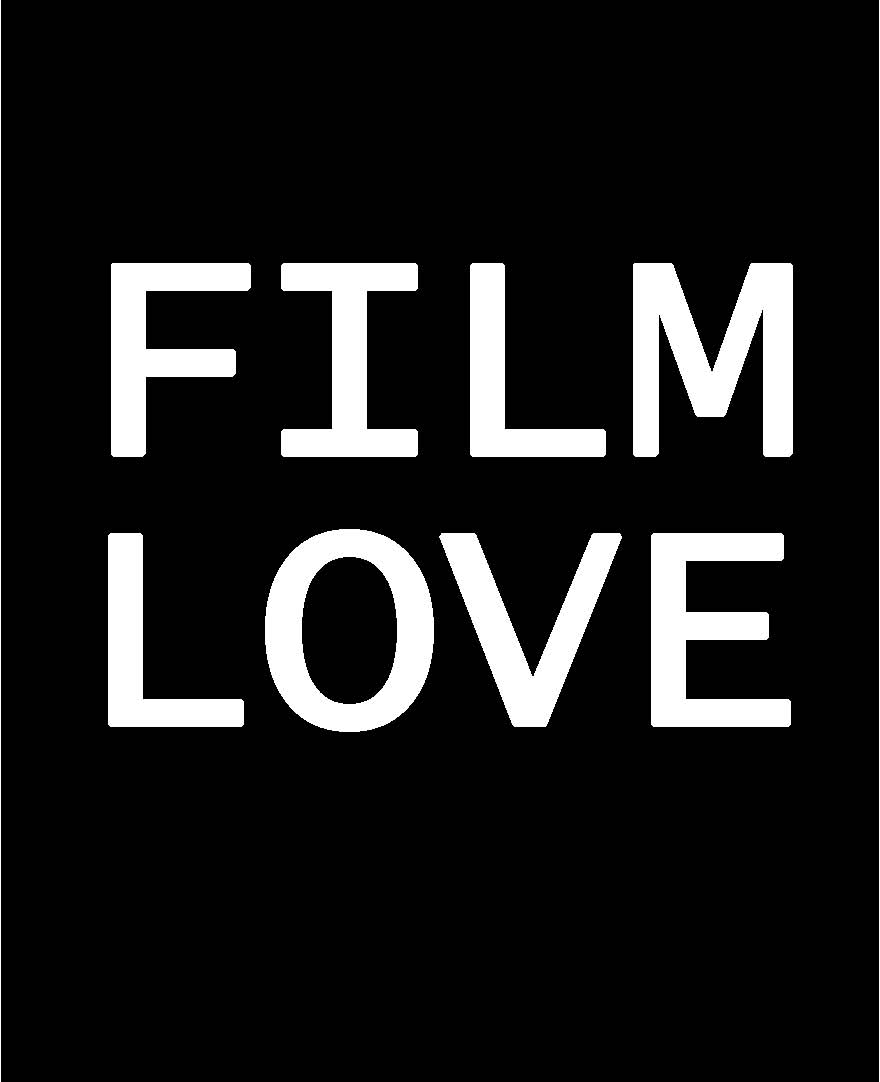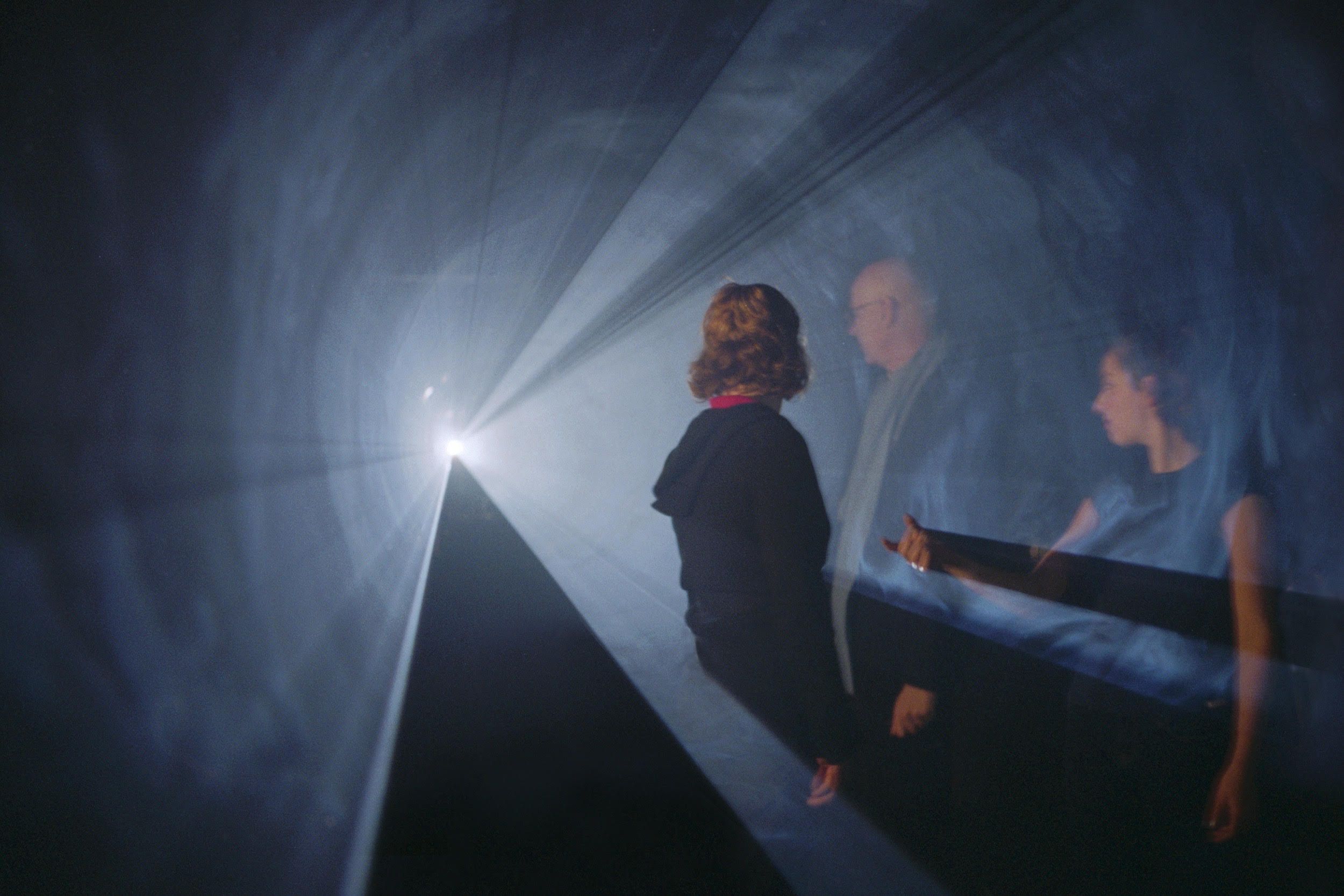

 |
| Anthony McCall, Line Describing a Cone, 1973, 16mm projected installation, 30 minutes, open edition © Anthony McCall Courtesy: Sean Kelly, New York |
light motion surface
depth screen room viewer projector
Thursday, February 7, 2019
High Museum of Art, Woodruff Arts Center, Atlanta, GA
Curated by Andy Ditzler
PROGRAM
L'arrivée d'un train en gare de La Ciotat
(Arrival of a Train at La Ciotat) (Auguste and Louis Lumière, 1896), digital
projection, 1 min
Panoramic View of the Golden Gate (Thomas Edison, 1902) digital
projection, 3 min
Bombing Cannibal Canyon (2015), digital projection,
courtesy Red Bull Media House
Pasadena Freeway Stills (Gary
Beydler, 1974), 16mm, 6 min
Opening the Nineteenth Century: 1896
(Ken Jacobs, 1991), 16mm with Pulfrich filters, 9 min
Shutter Interface (Paul Sharits,
1975) 16mm double projection, 25 min
Line Describing a Cone (Anthony
McCall, 1973) 16mm projection through fog, 30 min
Anthony McCall’s 1974
film Line Describing a Cone takes thirty minutes to draw a full circle
onscreen. That is the extent of the imagery on the reel, and the film is silent.
But differently than almost all other films, most of this film’s action is not
on the screen but in the space where the viewers are. This is because Line
Describing a Cone must be projected through fog from a hazer. As the circle
is drawn onscreen, the film gradually forms a cone of light between the
projector and the screen, made visible by the fog.
Both elegant and
spectacular, Line Describing a Cone is a uniquely engaging film.
Wherever it is shown a crowd gathers, usually staying to the end. Inevitably,
curious viewers approach the cone, looking inside, touching it, interrupting the
light to make temporary patterns. The cone seems surprisingly tactile, like a
sculpture, despite the fact that it is made only of light and fog. Sometimes
viewers find that the cone looks best standing at the screen facing back toward
the projector. Whatever happens (and each screening is necessarily different),
Line Describing a Cone is a compelling experience.
The film’s
illusory cone, its three-dimensional space, and the sense of spectacle it
creates, are starting points for Film Love’s February 7 screening at the High,
titled “light motion surface depth screen room viewer projector.” Each of these
words represents a property of cinema explored in the evening’s films. The
selections stretch from cinema’s earliest days in the 1890s to a present day
GoPro video. Included are several elegant short films from the 1970s. In that
decade, film artists reached back to cinema’s earliest days to rediscover how
moving images work a kind of magic through cinema’s unique combination of three
different qualities: light projected through a room, the representation of
photographic depth on a flat surface, and the illusion of motion on screen.
Motion is not actually inherent to a reel of film, which consists only of
still images placed sequentially on a long strip. At twenty-four frames per
second, a film projector animates these images and makes them appear to move in
time. In the process, the projector’s lens magnifies the images while a bright
lamp “throws” them through the air onto the screen on the opposite wall. This
magical-seeming process creates the illusion of motion onscreen that kept
audiences enthralled for more than a century.
The Lumière brothers’ 1896
film of a train arriving at a station in France is one of early cinema’s most
enduring images. The camera is on the platform, and the train thus approaches
the audience at a diagonal, nearly overwhelming the left side of the frame.
After the train stops, patrons bustle about. (The combination of visual
spectacle and quotidian imagery signals the Lumières at their best.) The
oft-repeated tale of viewers at this film’s premiere cowering in fear at the
onrushing train is almost certainly false. But there is no doubt that the
approaching train represented a new and uniquely cinematic form of visuality.
By a few years later, cameramen were attaching themselves to the front
of trains, recording onrushing movement through space. These “phantom ride”
films became one of cinema’s early popular genres. They were so profitable that
many examples were made, including the selection at this screening, released by
Thomas Edison in 1902 and known as Panorama of the Golden Gate.
These train films extended into new dimensions photography’s illusion of
depth on the flat surface of the screen. If the landscape painting of the 19th
century implied a visual mastery over the entire scene, and contemporaneous
360-degree panorama paintings (such as Atlanta’s Cyclorama) put the viewers into
the scene, the phantom ride catapulted viewers directly through it. As film
historian Tom Gunning aptly describes these movies, “All space is in constant
motion – everything is continuously both approaching and slipping away from us.”
This kind of film comes down to us today in the numerous videos of
thrill-seeking sports: free-flying wingsuiters, mountain climbers, bike riders
and skateboarders all strap tiny GoPro cameras to helmets, feet and handlebars,
often capturing the same kinds of views that attracted movie audiences in the
1910s.
Many artists’ films of the 1970s shared early cinema’s focus on
movies as interlocking processes of projected light, the conversion of still
frames into motion, and photographic depth onscreen. For his ingenious
Pasadena Freeway Stills (1974), Gary Beydler took film footage from inside
his car during a California road trip, and converted each film frame to a
separate photograph. He then reanimated the photographs within the frame, by
holding each one up to a glass and filming them in sequence. He gradually sped
up the cutting so that the drive is recreated in real time in the center of the
frame. At the same time, we see Beydler’s hands holding the photos; his
fingertips pressed against the glass provide a counterpoint of flatness to the
depth of the car film. Pasadena Freeway Stills is both an homage to the
motion thrills of early cinema and an elegant demonstration of how movies work.
A magician of cinema, Ken Jacobs is known for over a half-century of
work in filmmaking and dynamic projection performances utilizing visual
phenomena. His film Opening the Nineteenth Century: 1896 (1991) takes
early films from the Lumières and applies to them a visual phenomenon known as
the Pulfrich Effect, in which viewers can perceive three-dimensional depth using
a simple eye filter. (Filters will be provided at the event.) The result is a
3-D film that does not require elaborate projection technology – like the other
artists’ films on the program, it’s simply a 16mm projection.
Like
Beydler’s film, Paul Sharits’ fascinating 16mm projection piece Shutter
Interface (1975) exploits film’s standard projection rate of twenty-four
frames per second. The film consists of two 16mm reels (simultaneously
projected) of single color frames, in groups of two to eight frames in length –
that is, each color is seen for one twelfth to one third of a second. These
groups are separated by single black frames, during which a gentle tone sounds.
The two projections overlap in the middle, causing three different colors to be
seen at once, with the middle color necessarily a combination of whatever two
colors are being projected at that moment.
As projected on 16mm film,
Sharits’ color frames are particularly vibrant and attractive; Shutter
Interface is a pleasure to watch in any context. In this context though,
the film also raises a fundamental question about what cinema is. Since we are
dealing with solid color frames, there is no motion within the images, and no
depth either. What, then, can “motion pictures” mean here? As with some of the
earliest films, Shutter Interface offers a kind of pure experience of
motion, but one that is untethered to narrative or even imagery of the world. It
renews a sense of astonishment at the dynamism of the moving image.
This
is not to say conventional meaning cannot be assigned to these colors, however.
For one thing, the overlapping frames may put viewers in mind of a cinematic
“flag,” or they may speak to the relationship of the individual (a single color
frame/a person) to the collective (the overlapping colors/society). But also,
Sharits stated that he created the groups of frames to correspond to the rhythm
of his own “high-amplitude alpha waves” which he heard using biofeedback. The
knowledge of this film’s direct relation to the artist’s own body adds poignance
to the ephemerality of its screening. In a kind of cinematic empathy, the
uniquely sensory, enveloping nature of Shutter Interface brings the
viewers’ own bodily perceptions and sensations to the forefront.
This
returns us to Line Describing a Cone, the final film on this program.
Just as in early cinema the camera moved from filming the train to riding on it,
McCall’s film transfers viewers from their cinema seats into active users of the
whole cinema space, settling into particular spots to view or moving along the
cone as they wish. During this program, we travel from the train’s approach to
the camera in 1896, through the illusory depth of the phantom ride, to Jacobs’
homemade 16mm 3-D, to the very real depth of McCall’s slowly forming, then
disappearing cone of light.
Despite their popularity whenever shown,
such films as these are seldom screened due to the relative rarity of 16mm
projectors and (in the case of McCall’s film) the requirement for an open
screening space free of seats, in which haze can be created. Due to these unique
projection circumstances, this screening will take place not in a traditional
theater space but in the Woodruff Arts Center’s Beauchamp C. Carr Room, directly
adjacent to the Rich Theatre.
Andy Ditzler, January 2019
REFERENCES
Gunning, Tom. “The Attraction of Motion: Modern Representation
and the Image of Movement.” In Film 1900: Technology, Perception, Culture,
edited by Annemone Ligensa and Klaus Kreimeier. New Barnet, UK: John Libbey,
2009.
Cathcart, Linda. “An Interview with Paul Sharits.” Film
Culture no. 65-66, 1978.
UPCOMING Film Love retrospective dates at the High Museum:
Thursday, March 14, 2019
Thursday, April 16, 2019
Thursday, May 9, 2019
light motion surface depth screen room viewer
projector is a Film Love event. The
Film Love series provides access to great but rarely-screened films, especially
important works unavailable on consumer video. Through public screenings and
events, Film Love preserves the communal viewing experience, provides space for
the discussion of film as art, explores diverse forms of projection and viewing,
and illuminates connections between the moving image and other art forms. Film
Love is curated by Andy Ditzler.